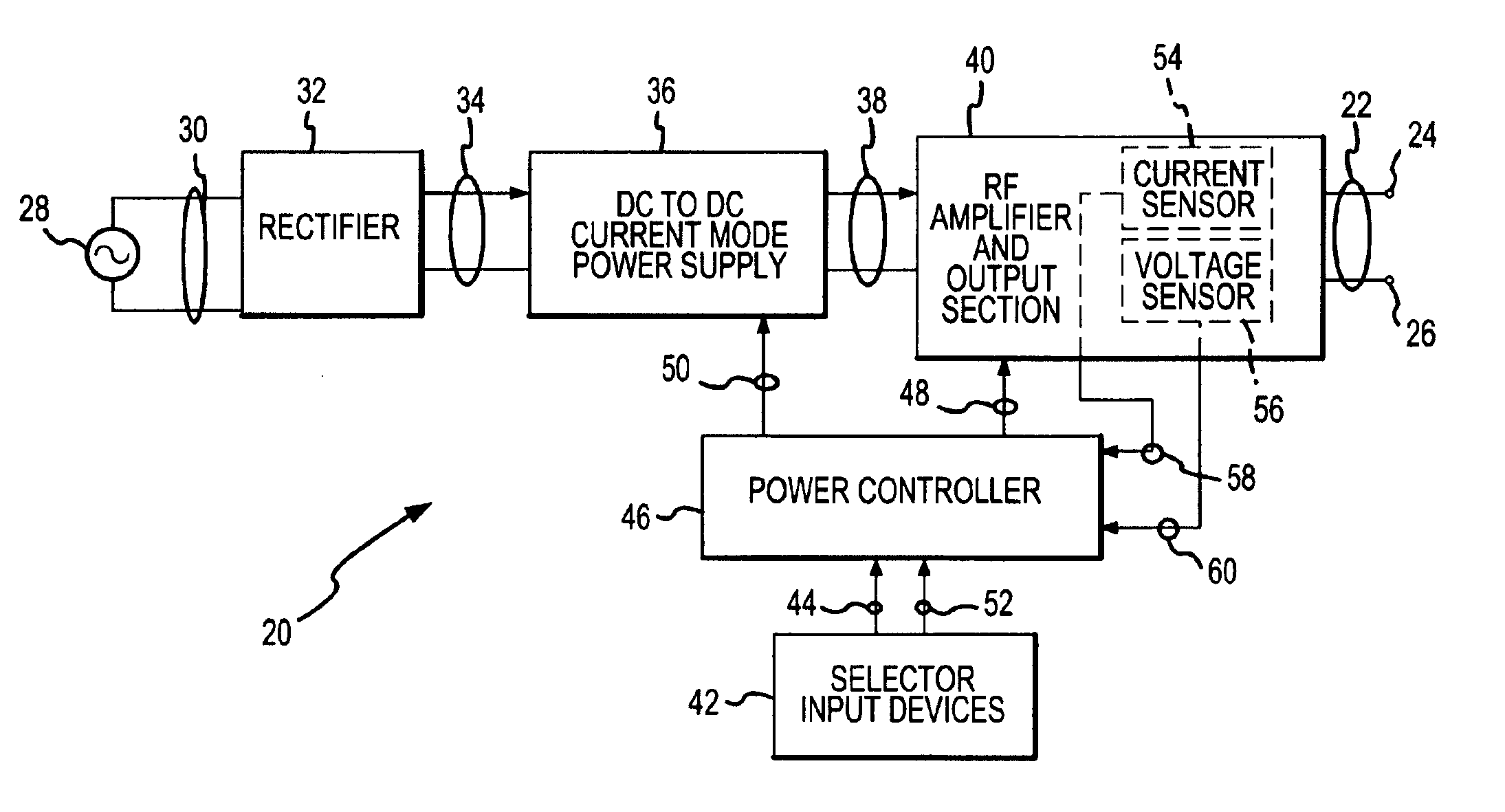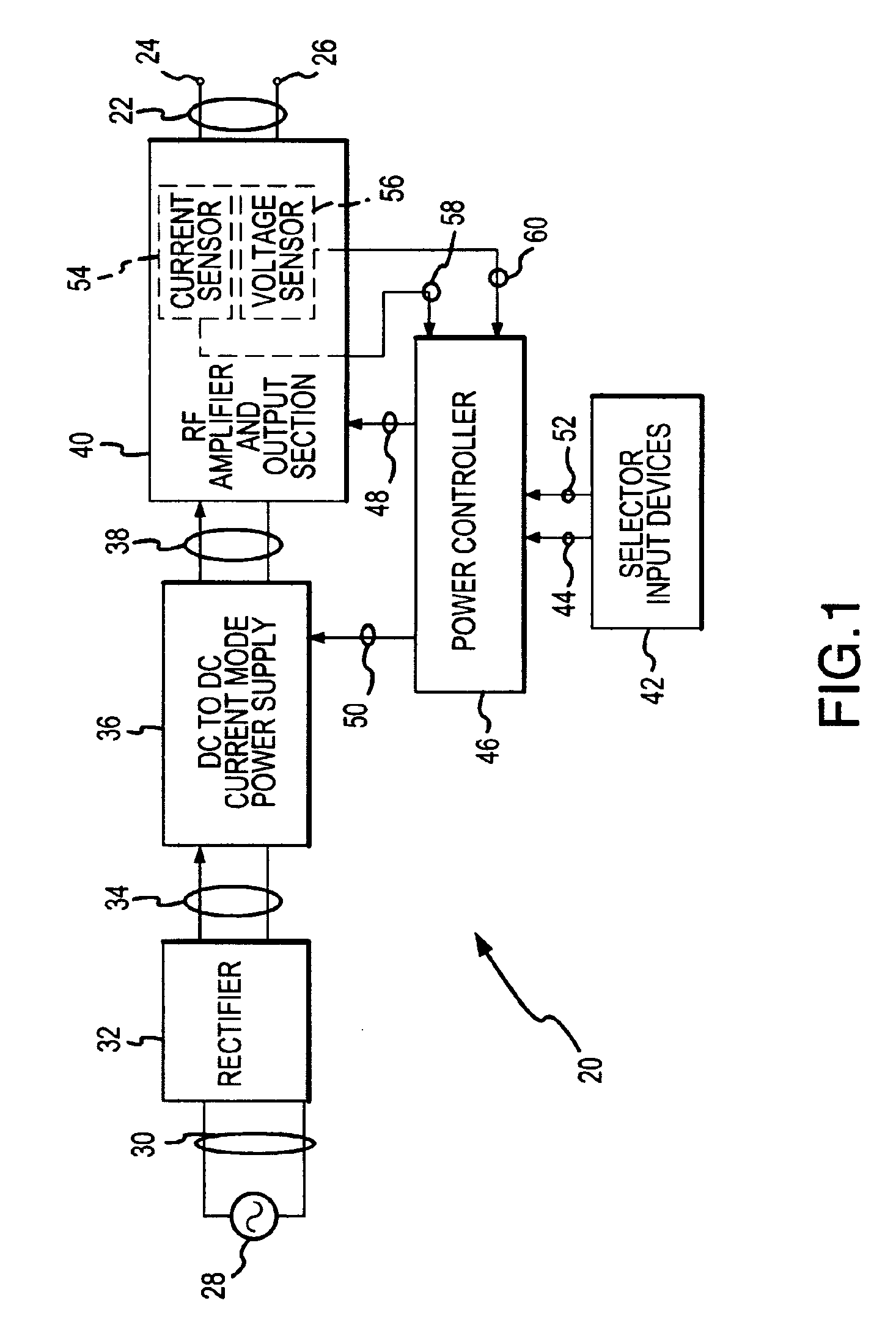Selecting the coagulation mode of operation causes the electrosurgical generator to repetitively deliver relatively short bursts of
high voltage, resulting in a relatively low average output power delivery.
Any attempt to meet the rapidly changing power requirements cannot be accompanied by excessive over-control to the point where the output RF electrosurgical power causes damage to the tissue or injury to the patient or surgical personnel.
Very few, if any, electrosurgical generators have the capability to meet all of these requirements, regardless of how well these requirements are understood.
Indeed, almost no other electrical
amplifier or power supply is subject to such widely varying requirements.
Under very low or very high output power conditions, the time width or on-
time duration of the energizing pulses may reach such small or large proportions of the overall
cycle time that
effective power regulation and conversion is difficult or impossible to achieve.
As the on-time of the energizing pulses diminishes to a minimal portion of the overall cycle or as the on-time portion increases to a substantial portion of the overall cycle, the ability to regulate the output power becomes more difficult.
A relatively short on-time portion of the energizing
current pulse does not transfer a large amount of energy for conversion, making precise
power regulation under low power delivery conditions with relatively short on-time energizing pulses more difficult.
A relatively long on-time portion of the
current pulse does not provide
sufficient time during the off-time portion of each cycle for the energy to be converted, again making it difficult to regulate the amount of energy which is delivered under such circumstances.
Thus, energizing pulses having a relatively short or a relatively long on-time do not provide the best
power control and regulation capability.
One of the disadvantages of a voltage mode DC high voltage power supply used in an electrosurgical generator is that it has a finite
delay time when it is necessary to limit the current, or to
shut down (i.e. turn off), or to rapidly ramp up, or increase, the DC output voltage.
Because of the rigorous requirements for substantial variations in the RF electrosurgical
power output and waveform, a voltage mode DC high voltage power supply limits the ability of the electrosurgical generator to adapt to changing tissue impedances and output power delivery and regulation circumstances.
Adapting a
switched current mode DC power supply to an electrosurgical generator creates difficulties not typically experienced in the typical use of a switched
current mode DC to DC power supply.
This
ringing adversely affects the input current feedback
signal and, unless suppressed, will cause the
current mode controller to adjust the characteristics of the input current pulses under circumstances where no adjustment may be required or desirable, or even
shut down the power conversion entirely.
However, in electrosurgical generators, the built-in blanking capability of the
current mode controller is insufficient.
These aspects of the conversion
transformer exaggerate the
ringing conditions in the input current feedback
signal to the extent where the built-in blanking capability of a conventional current mode controller is not entirely satisfactory for use in a switched current mode power supply used in an electrosurgical generator.
However, under low output power conditions required for electrosurgical use, blanking an initial portion of an already shortened on-time of the feedback current
signal may take up such a significant percentage of the feedback current signal that the remaining portion of the signal is insufficient for reliable and precise output
power control and regulation.
 Login to View More
Login to View More  Login to View More
Login to View More 


